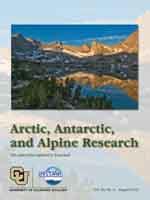We reconstructed the former ice cap of the Wind River Range, Wyoming, using a glaciological model with scaled modern temperature and precipitation inputs to examine probable climate during the local Last Glacial Maximum (LGM) (or Pinedale glaciation). A key result is that temperature anomalies of - 10 °C, -8.5 °C, -6.5 °C, and -5 °C must compensate respective precipitation values of 50%, 100%, 200%, and 300% that of modern in order for the maximum glacier system to attain equilibrium. In further sensitivity tests, we find that ice-cap area and volume shrink by 75% under a climate forcing 50% modern and 50% LGM. The glacier system disappears altogether in ∼100 years when subjected to sustained modern conditions. Our results are consistent with other interpretations of western U.S. LGM climate, and demonstrate that the Wind River Ice Cap could have disintegrated rapidly during the first phase of the termination. In future work we will simulate glacier-climate evolution as constrained by emerging 10Be moraine chronologies.
How to translate text using browser tools
1 August 2012
Climate Inferences from a Glaciological Reconstruction of the Late Pleistocene Wind River Ice Cap, Wind River Range, Wyoming
Sean D. Birkel,
Aaron E. Putnam,
George H. Denton,
Peter O. Koons,
James L. Fastook,
David E. Putnam,
Kirk A. Maasch





